Refund Guaranteed
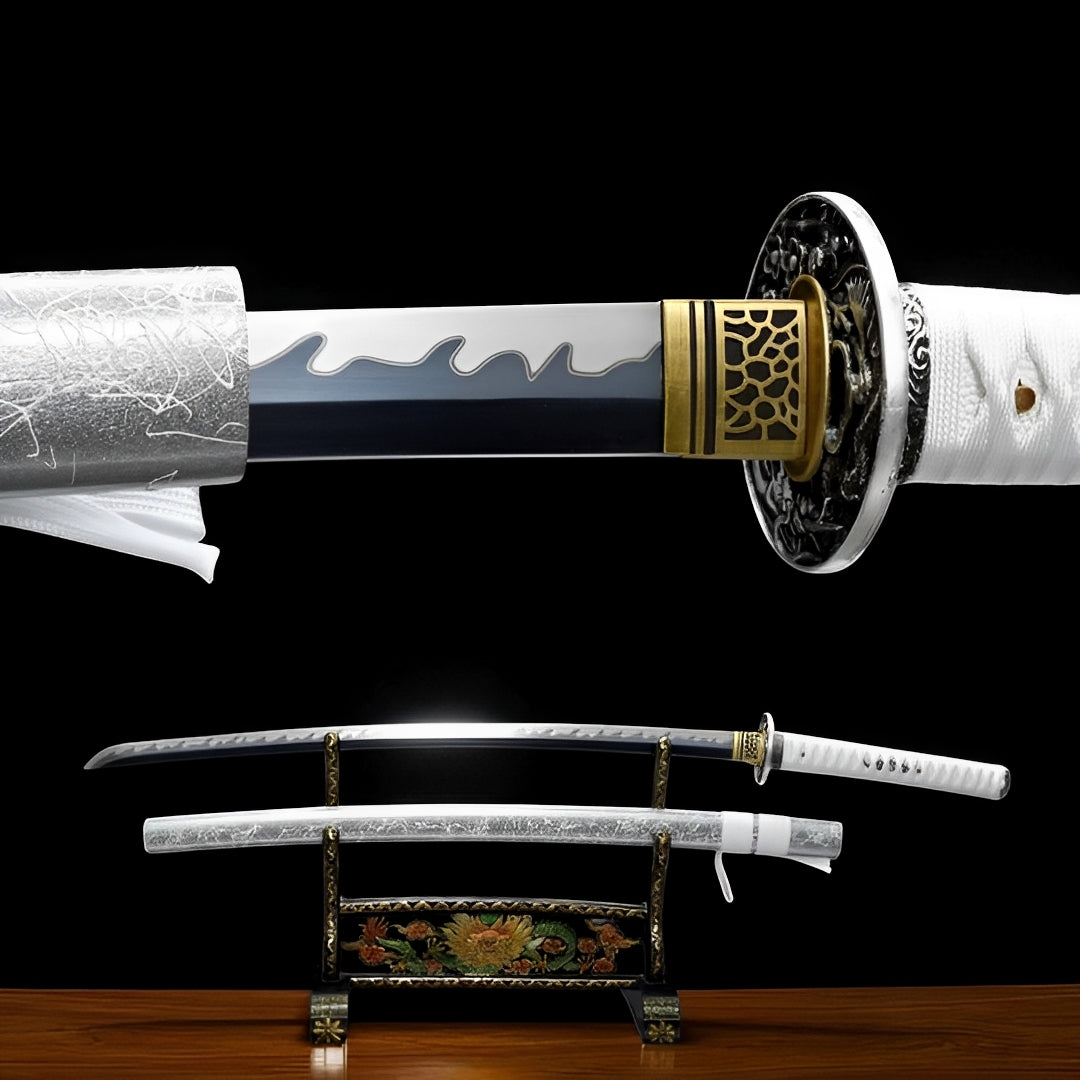
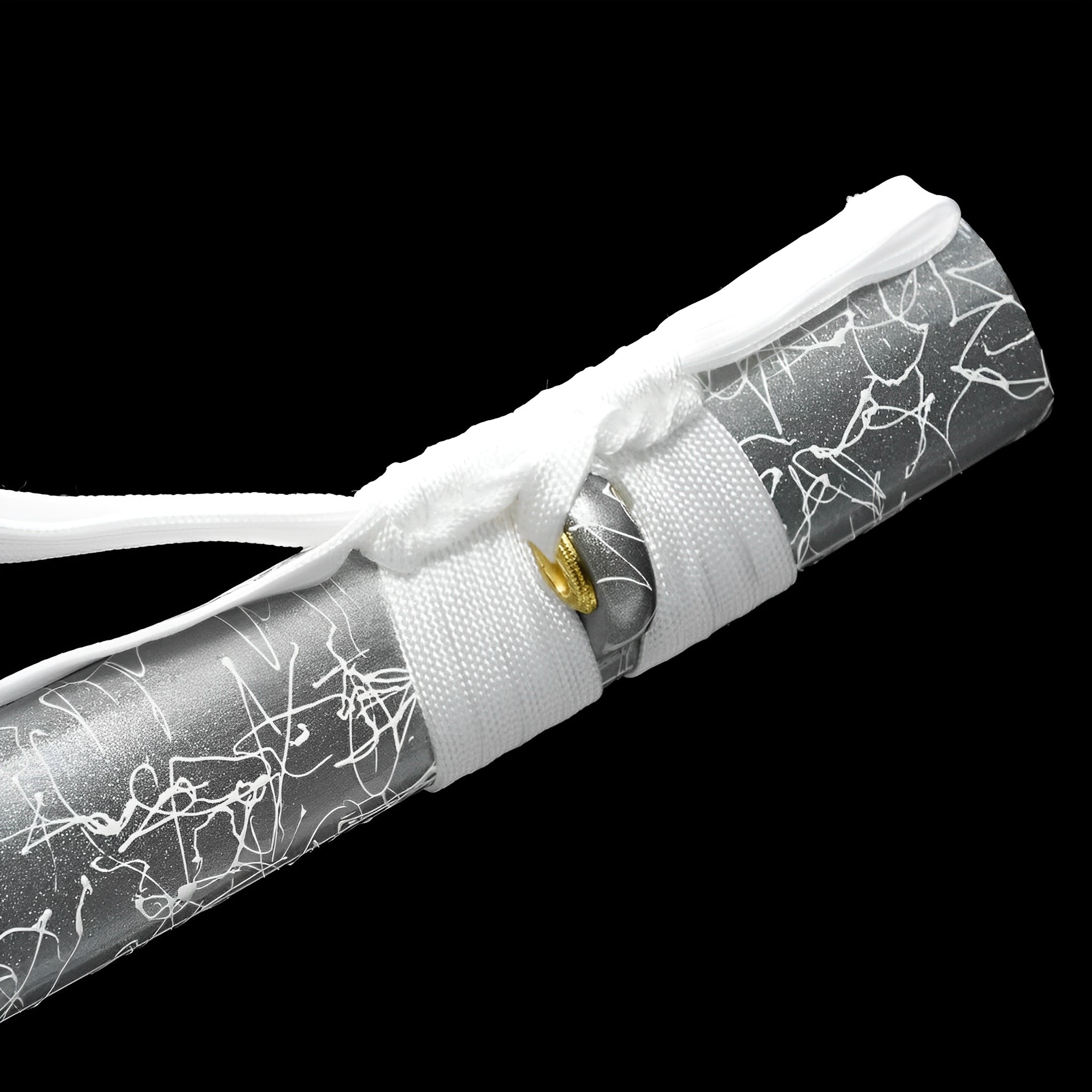
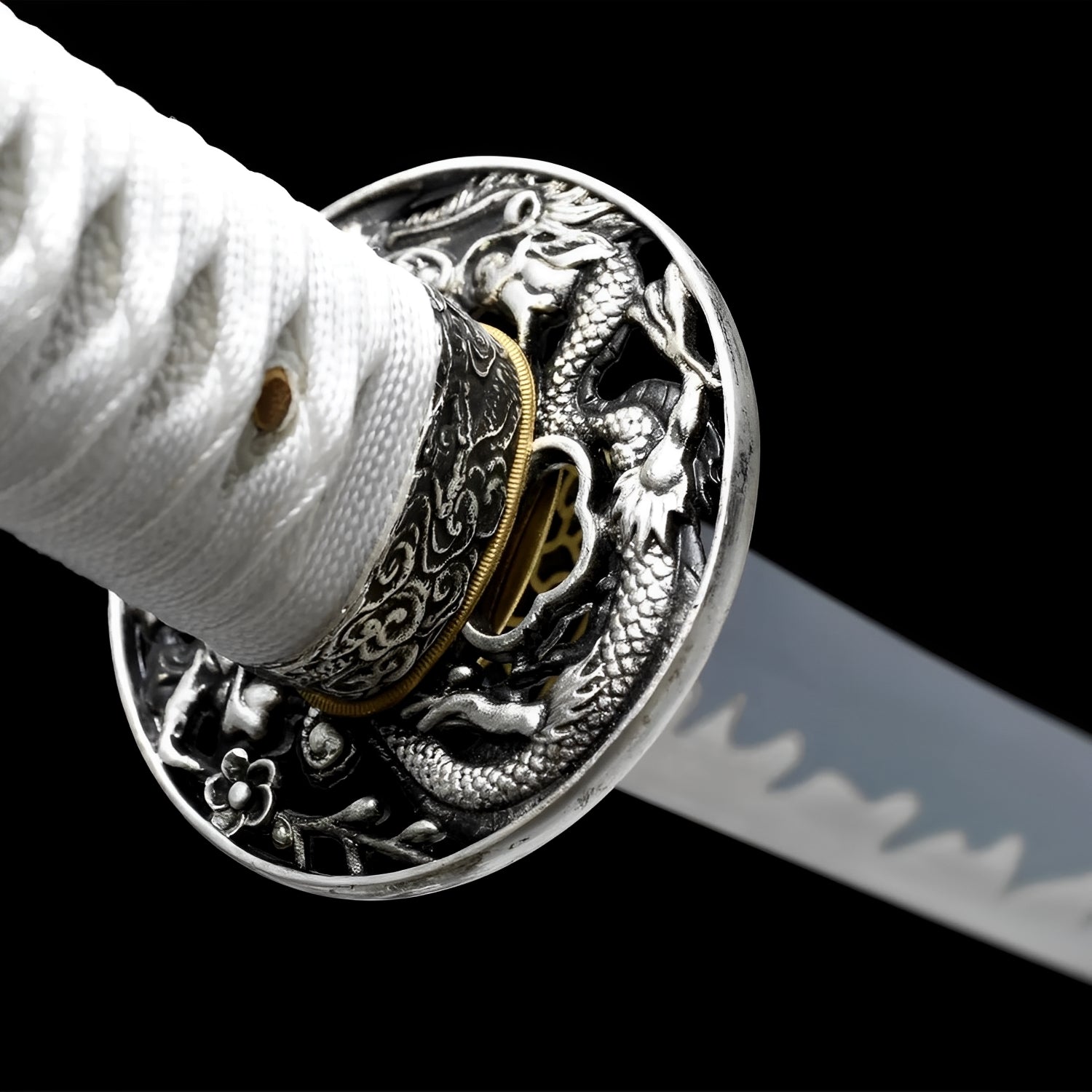

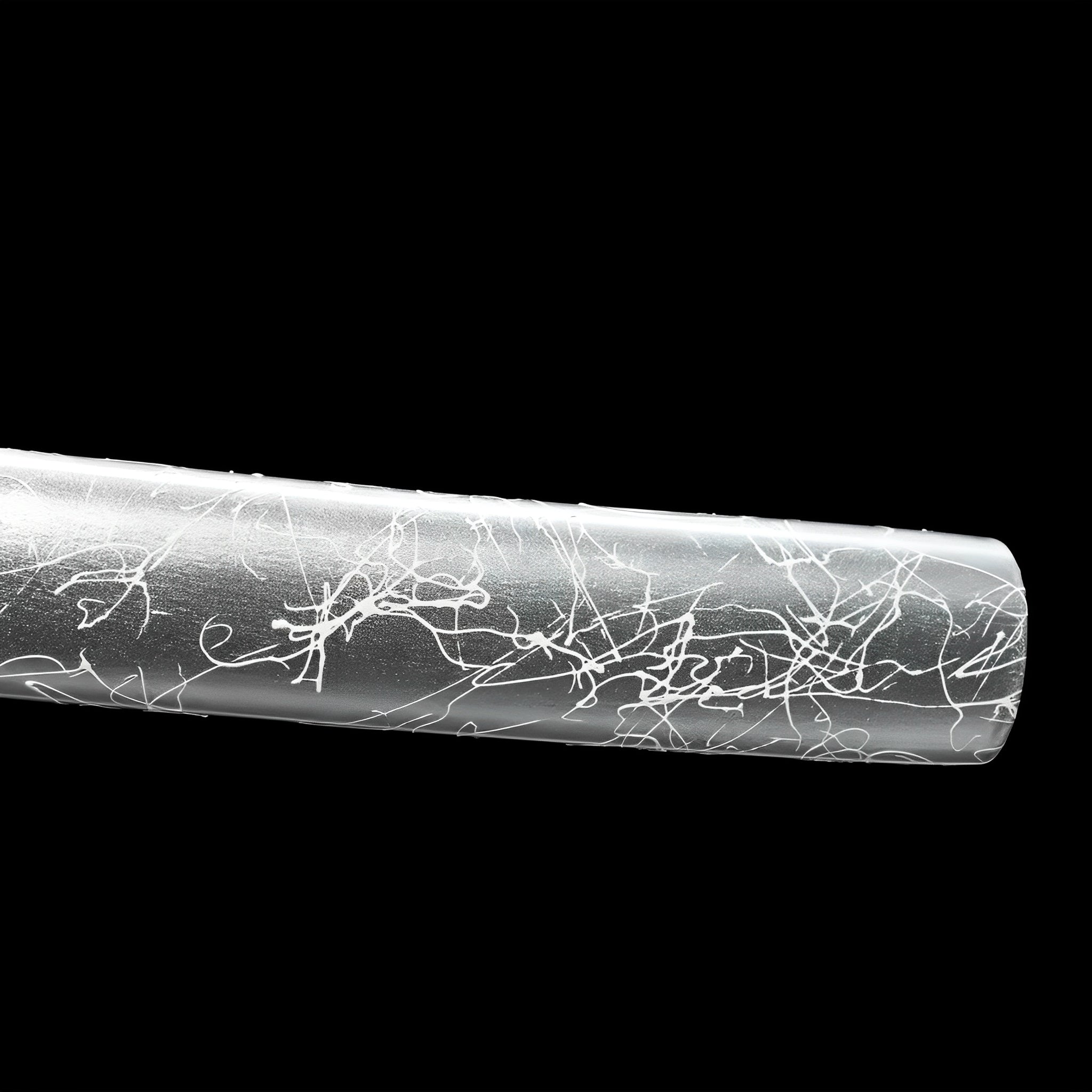
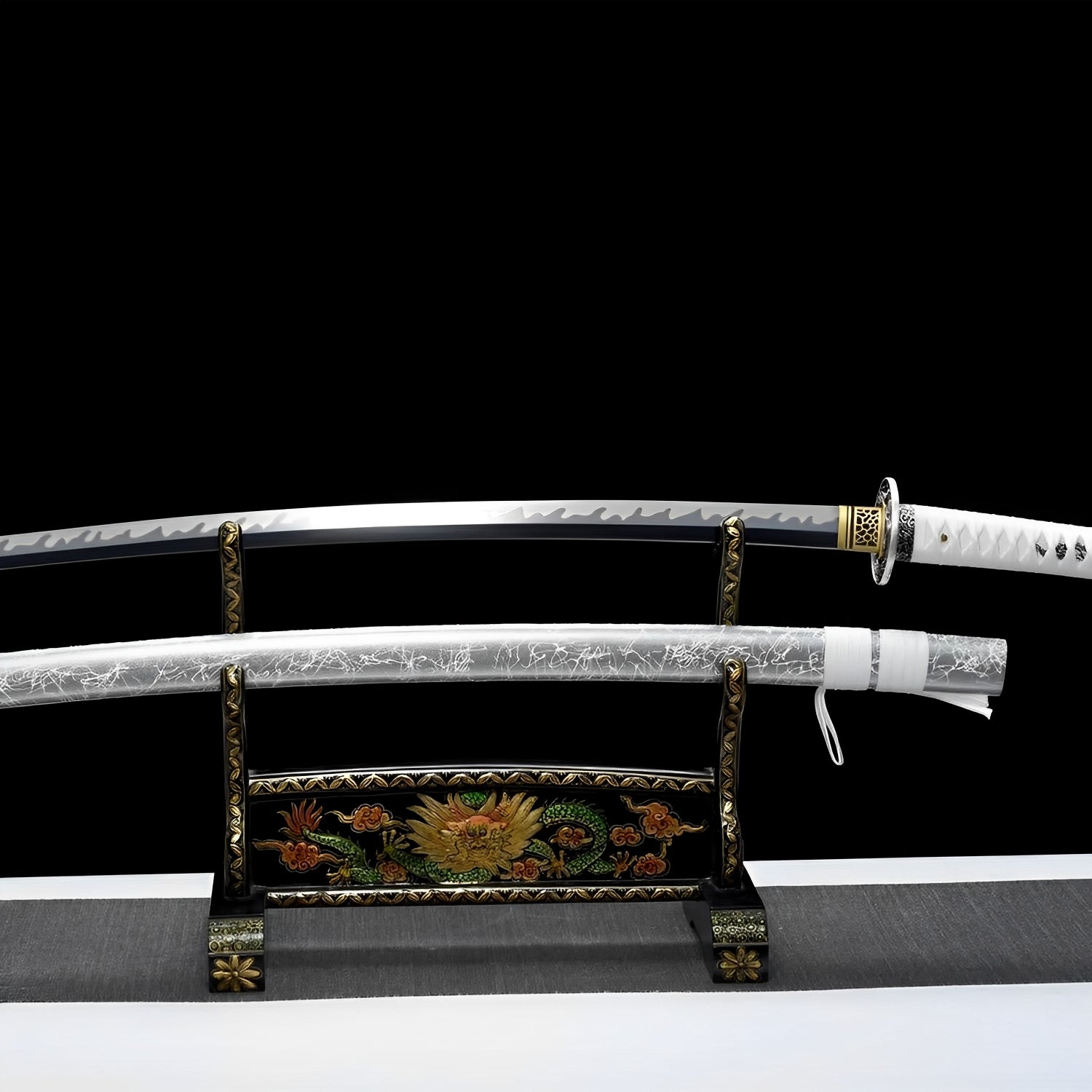
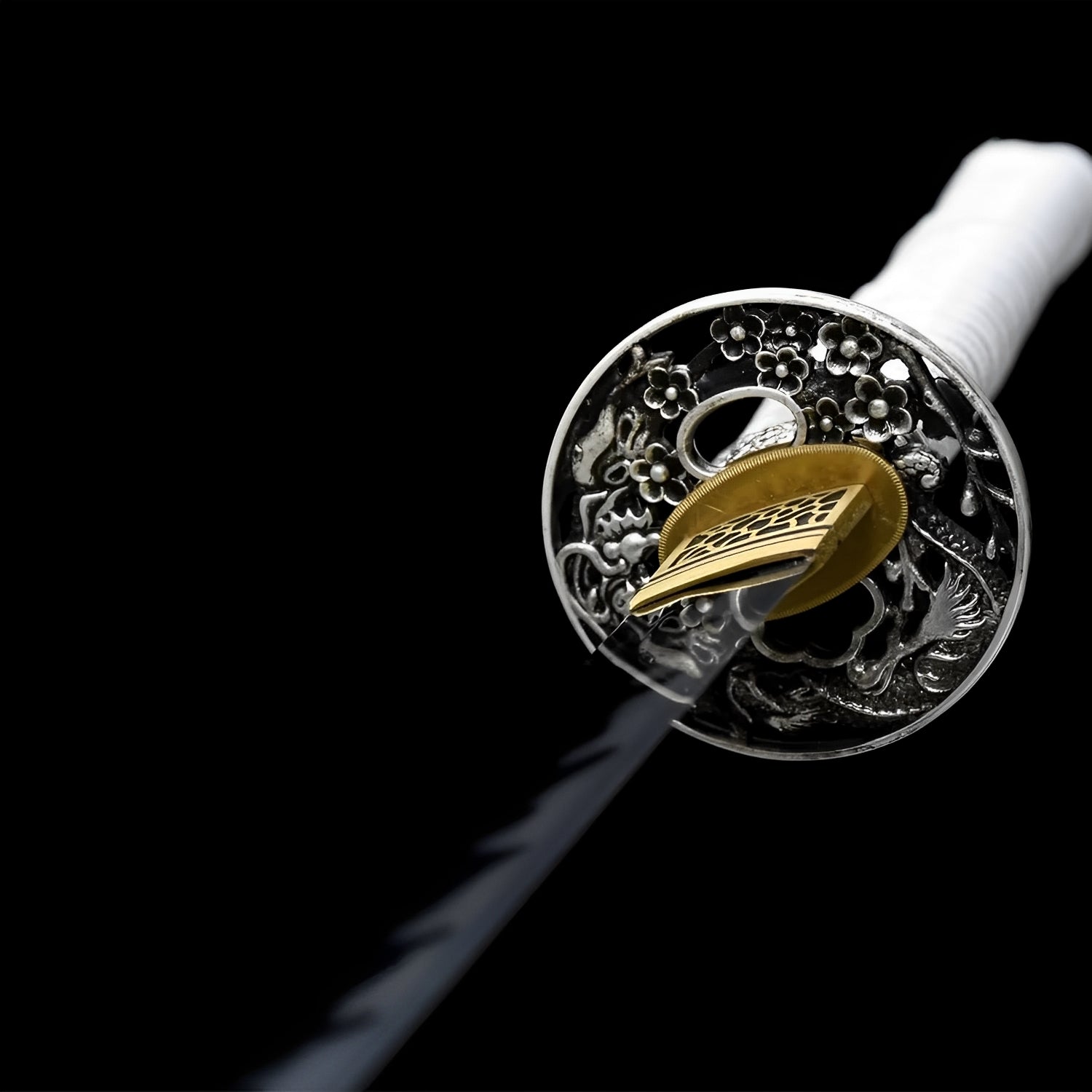
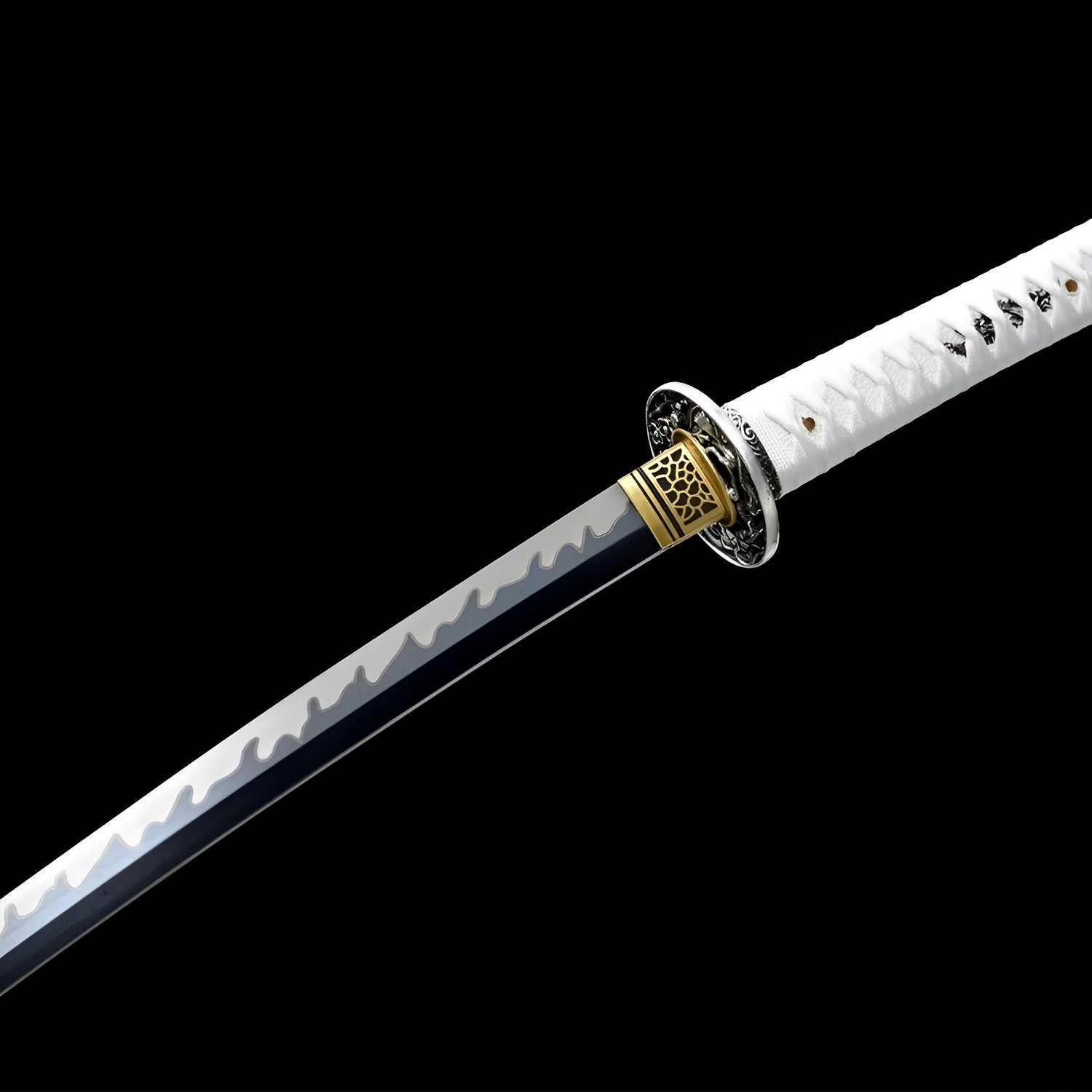
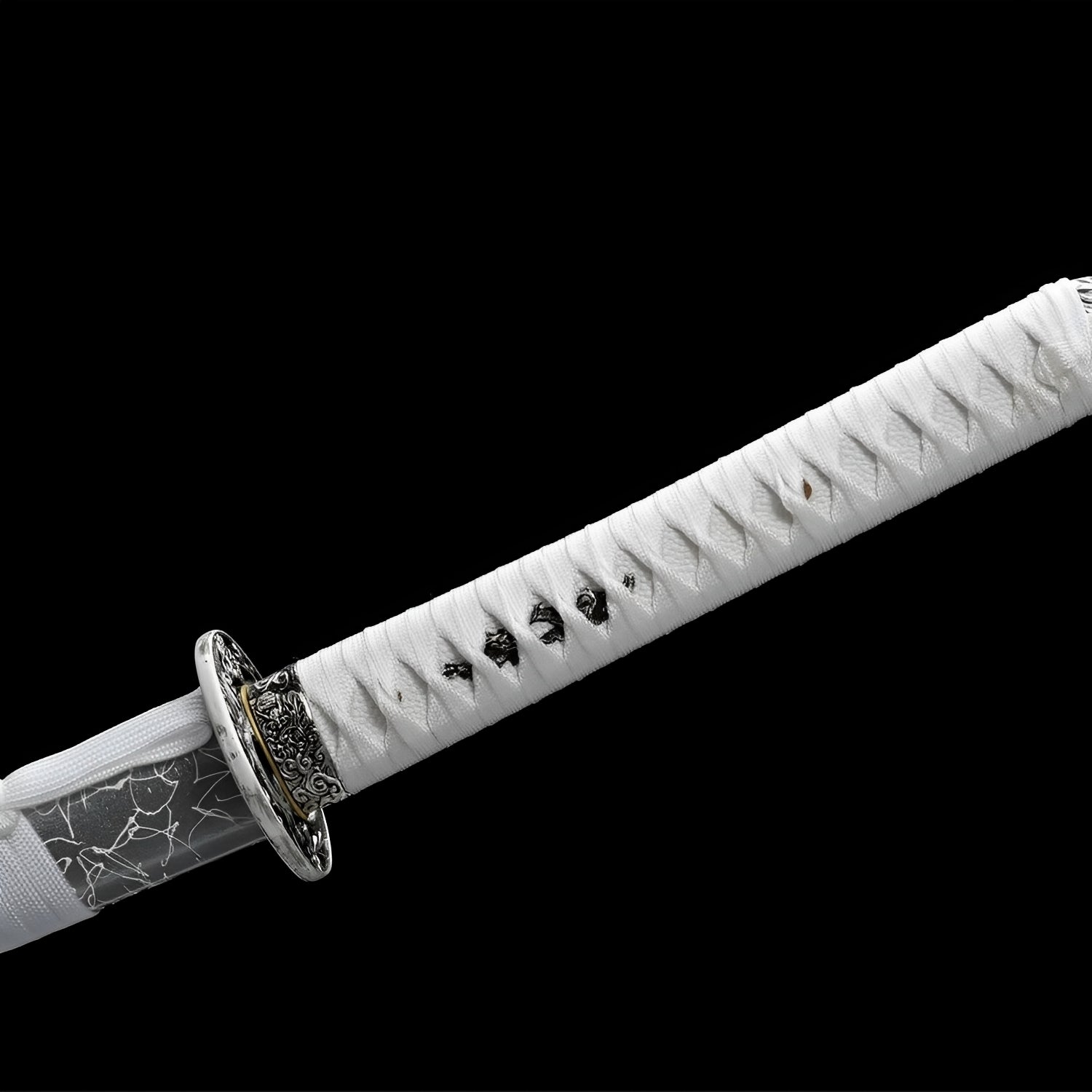
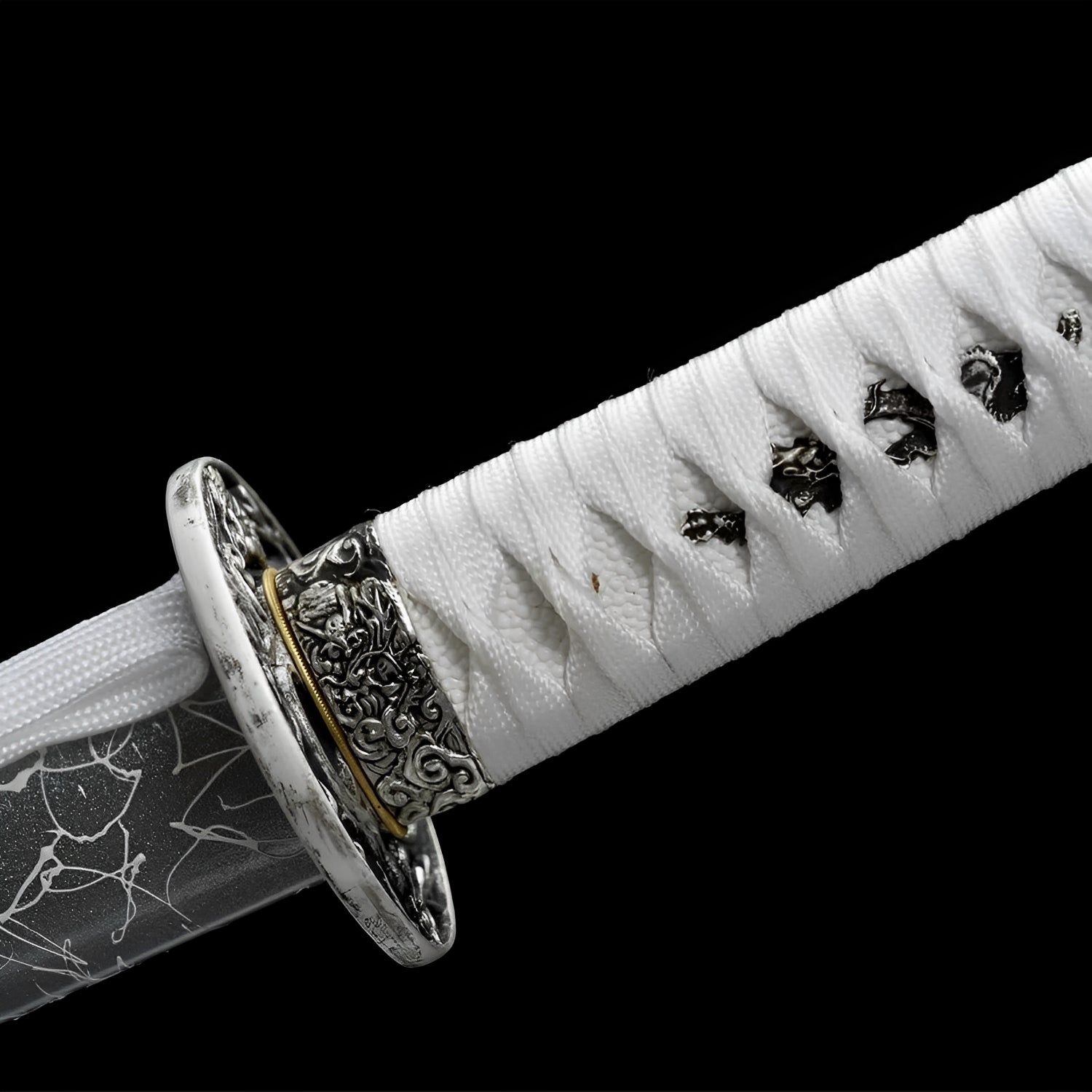
Why choose us
Ships within 48/72h
Forged Blade
Collector Quality
Trusted Globally
Inspired by Japan
White Katana Sword - 白い剣
Included with your order



Note: Engraving placement and orientation may vary by blade model (hamon, geometry, and flat area).
Free Shipping over $250
No Bots, No AI
Refund Guaranteed
Free Shipping over $250
No Bots, No AI
Our team is here to help with any questions or concerns.
We’re always happy to assist you — don’t hesitate to reach out.
Why choose us
Ships within 48/72h
Forged Blade
Collector Quality
Trusted Globally
Inspired by Japan

White Katana Sword - 白い剣
Specifications
- Handmade
- Full tang in handle
- SHARP
- Blade: 1060 carbon steel
- Cotton Sageo / ITO
- Synthetic Rayskin on tsuka
- Iron alloy tsuba
- Overall size: 105cm
- Blade size: 72cm
- Blade width: 3.2cm
- Blade thickness: 0.7cm
- Handle size: 30cm
White Katana Sword - Flowing Void Minimalist Mastery
Command through absence with the White Katana, blade proving power lies in what you remove, not add. This zen minimalist masterwork rejects decoration's tyranny - midnight navy steel cutting darkness like ship's prow through ocean depths, pure white elements creating negative space where others pile ornamentation, wave-cut edge suggesting water's adaptability conquering stone's rigidity. Not weapon for collectors needing constant visual stimulation but instrument for those understanding greatest elegance emerges when unnecessary elements disappear, asking whether you possess confidence letting simplicity speak or need excess compensating for aesthetic insecurity.
Less is More Philosophy
Western design took centuries recognizing what Japanese aesthetics knew millennia ago: perfection achieves not when nothing remains to add but when nothing remains to remove. This reduction blade embodies that ma (間 - negative space) principle, where emptiness becomes presence, where absence creates meaning, where white void enables navy steel's impact through contrast rather than competition.
The wave-cut blade edge specifically demonstrates functional beauty - those geometric undulations aren't decoration but intentional design serving purpose. Traditional Japanese wave patterns (seigaiha) appeared on textiles, ceramics, architecture not as random prettiness but as symbolic representation of endless flow, perpetual adaptation, water's patient power wearing away mountains through persistent gentle pressure. The adaptive edge blade suggests wielder embracing similar philosophy: rigid strength breaks; flowing strength endures.
Contemporary minimalism often gets confused with sterility - bare white rooms feeling cold rather than calm, stripped-down designs appearing cheap rather than refined. True minimalism requires understanding what to keep when removing everything possible. Each remaining element must justify existence through perfect execution. The navy-white palette survives that ruthless editing because neither color can be eliminated without destroying whole composition's balance.
Traditional samurai aesthetics actually practiced extreme minimalism through necessity - warriors traveling light, maintaining equipment efficiently, valuing multifunctional simplicity over specialized complexity. Tea ceremony's wabi-sabi emergence from military contexts makes sense: both required finding profound beauty in simplest elements, both demanded discipline recognizing when enough becomes enough.
Modern collectors drowning in possessions increasingly appreciate pieces embodying "less is more" - not because lacking resources for elaborate alternatives but because sophisticated taste recognizes complexity's eventual exhaustion versus simplicity's infinite contemplation potential.
Navy Depths Meditation
The deep navy blade creates unusual choice among katanas typically featuring bright colors or metallic finishes. Navy suggests ocean depths where sunlight barely penetrates, where pressure crushes casual explorers, where mysterious creatures adapted to darkness thrive. This depth blade invokes that submarine psychology: surface appearances matter less than what lurks beneath, showy displays indicate insecurity, true power operates quietly in depths where only serious seekers venture.
Navy specifically balances between blue's openness and black's mystery. Pure black becomes oppressive; bright blue appears frivolous; navy occupies perfect middle ground suggesting intelligence, reliability, depth (literally and metaphorically). Military organizations worldwide favor navy precisely because it communicates seriousness without aggression, authority without arrogance, power without display.
The color also references Japanese indigo dyeing traditions - ai-zome creating blues from natural indigo plants through complex fermentation processes, darker shades requiring multiple dippings, deepest tones achievable only through patience and expertise. Traditional indigo workshops smell powerfully organic, the dye-masters' hands permanently stained blue, the entire process demanding respect for natural materials and time-intensive craft. The indigo heritage blade navy connects to those traditions even through modern synthetic coatings.
Psychological color theory associates navy with contemplation, wisdom, stability - appropriate for sword serving collectors who've moved beyond needing flashy stimulation, who appreciate sustained subtle beauty over immediate dramatic impact, who understand finest things reveal complexity gradually rather than dumping everything on first impression.
White Negative Space
The pure white handle, saya sections, and tsuba create breathing room preventing navy from becoming heavy. But calling these elements "white" undersells their function - they're not colored white so much as colored absence, creating voids allowing viewers' eyes resting between navy's intensity. This breathing blade understands rhythm requires pauses, that constant stimulation exhausts, that negative space enables positive elements achieving maximum impact.
Traditional Japanese ink paintings (sumi-e) mastered this principle - leaving portions of paper unpainted, allowing white void suggesting clouds, mist, distance, potential. What artists didn't paint mattered as much as what they did, the empty spaces creating psychological effects impossible through filling every corner. The white elements function identically, transforming practical components into compositional necessities.
The white also suggests purity, fresh starts, blank canvas potential - but importantly, it's not aggressive sterile white demanding attention but calm neutral white providing rest. Hospital white creates anxiety; this white creates peace. Understanding that distinction separates good minimalism from bad, successful simplicity from failed austerity.
Modern architecture increasingly recognizes white's power when used correctly - Tadao Ando's concrete and light, minimalist museums where white walls become galleries for natural light's performance, Scandinavian design's hygge coziness despite color restraint. The architectural blade applies those spatial principles to sword design, creating three-dimensional composition where each element occupies perfect position relative to others.
Wave Flow Adaptation
The wave-cut blade edge deserves detailed examination - those undulating curves aren't random but follow specific geometric patterns suggesting water's eternal flow. Water adapts to container's shape yet eventually erodes container itself; water appears weak yet cuts through stone; water flows around obstacles rather than confronting them directly yet reaches ocean inevitably. The water philosophy sword embodies those principles through design communicating philosophical concepts.
Traditional Japanese sword philosophy emphasized flow - letting attacks slide past rather than blocking rigidly, redirecting force rather than opposing it directly, achieving victory through adaptability rather than stubbornness. The wave edge becomes physical manifestation of that combat philosophy, the undulating curves suggesting motion even in stillness, adaptation even in solid steel.
The pattern also creates practical considerations - those curves change how light interacts with blade surface, creating shifting highlights and shadows as viewing angle changes, ensuring blade never appears static even under fixed lighting. That dynamic quality rewards sustained viewing, revealing different aspects depending on observer's position, time of day, ambient conditions.
Biomimicry - designing human objects based on nature's proven solutions - increasingly influences modern engineering. Shark skin's texture reducing drag, bird wing structures informing aircraft design, spider silk's strength inspiring materials science - all prove nature optimizes through millions of years what humans fumble toward through decades. The wave pattern respects that tradition, accepting water's wisdom about cutting, flowing, adapting.
Zen Collection Statement
This contemplative centerpiece serves specific collector psychology: those tired of visual noise, seeking calm amid chaos, wanting fewer possessions chosen more carefully. The minimalist aesthetic demands different relationship than busy elaborate swords - it doesn't announce itself obnoxiously but rewards quiet sustained attention, revealing depth gradually rather than immediately.
Interior design perspectives welcome minimalist pieces far more readily than most anime swords. The navy-white palette integrates into spaces ranging from traditional Japanese rooms to modern Scandinavian apartments to industrial lofts. That versatility matters for collectors whose living spaces serve multiple functions, where weapons must justify presence through aesthetic contribution beyond fandom signaling.
Photography creates interesting challenges - capturing depth in seemingly simple subjects requires skill most amateur photographers lack. But mastering that challenge produces images with staying power exceeding flashier subjects, the composition's balance and restraint creating photographs that don't tire viewers through repeated viewing.
Investment value favors timeless design over trendy excess. While colorful character blades date themselves through association with specific media properties' rise and fall, elegant minimalist pieces maintain appeal across decades. The navy-white combination will photograph as beautifully in 2050 as 2025, the wave pattern will communicate flow regardless of current aesthetic trends.
The mature aesthetic piece particularly suits collectors who've accumulated extensively, realize quality trumps quantity, begin curating rather than accumulating. This sword represents that transition - choosing one perfect piece over ten adequate alternatives, accepting that some blank wall space enables better appreciation of what does get displayed.
Care Instructions: Maintain this minimalist masterwork understanding that simplicity shows imperfection mercilessly. The white elements require constant vigilance - fingerprints, dust, discoloration all show immediately against pure background. The navy blade benefits from microfiber cloths preventing scratching while removing debris. The wave-cut edge deserves careful attention; those curves create crevices where dust accumulates if neglected. Display in climate-controlled space; temperature extremes stress any coating eventually. Handle with understanding that minimalism demands maximum maintenance - easy to mess up, hard to maintain, but worth effort when sustained. Consider this blade meditation practice: caring for it properly requires same focus, patience, attention detail that Zen practices cultivate. The sword becomes teacher if you let it.
Empty. Full. Flowing. Still. Navy depths. White peaks. Waves teach patience conquering stone.
Legal Disclaimer
By purchasing from Katana Corp, you acknowledge and agree that:
- You are at least 18 years of age (or the age of majority in your jurisdiction).
- You are solely responsible for verifying and complying with all local laws and import regulations before placing an order.
- Some countries prohibit the importation of swords entirely. Katana Corp is not responsible for orders delayed, seized, or refused by customs authorities.
- All katanas and related products are sold strictly as decorative and display items. They are not intended or certified for combat use.
- Depending on the jurisdiction, swords may legally be considered bladed weapons, subject to specific restrictions or prohibitions.
- Katana Corp disclaims all liability for any injury, damage, or legal consequences resulting from misuse, abuse, or unlawful use of its products.
For full details, please refer to our Terms of Service.
Care & Maintenance
To maintain your katana's appearance and performance over time, we recommend:
- Regularly wiping the blade with a soft cloth to remove fingerprints and moisture.
- Applying a light coat of choji oil to prevent rust (for carbon steel blades).
- Storing the sword in a dry place, preferably inside its saya.
- Avoiding direct contact with hard surfaces to preserve sharpness and finish.
For more care tips, check our full maintenance guide in the FAQ section.
Behind the Blade
Every katana we offer carries the essence of centuries-old craftsmanship.
More than just a weapon, the katana symbolizes discipline, honor, and mastery.
Our artisans draw inspiration from traditional forging methods to ensure each blade reflects the spirit of the samurai — strength, precision, and soul.
Owning one is not just about aesthetics — it’s about carrying a piece of that legacy.
User Experience
This katana is designed to offer a perfect balance between blade and handle.
Its ergonomic tsuka (handle) allows a secure two-handed grip, while the weight distribution ensures smooth, fluid movement.
Whether for training, display or cutting practice, handling feels natural and precise.

The Art of Traditional Forging
Each katana we craft is born from centuries of samurai tradition.
Our master smiths shape every blade by hand, folding the steel to achieve unmatched strength, flexibility, and beauty.
This time-honored process is not just about creating a weapon? it’s about preserving a legacy of discipline, honor, and artistry.
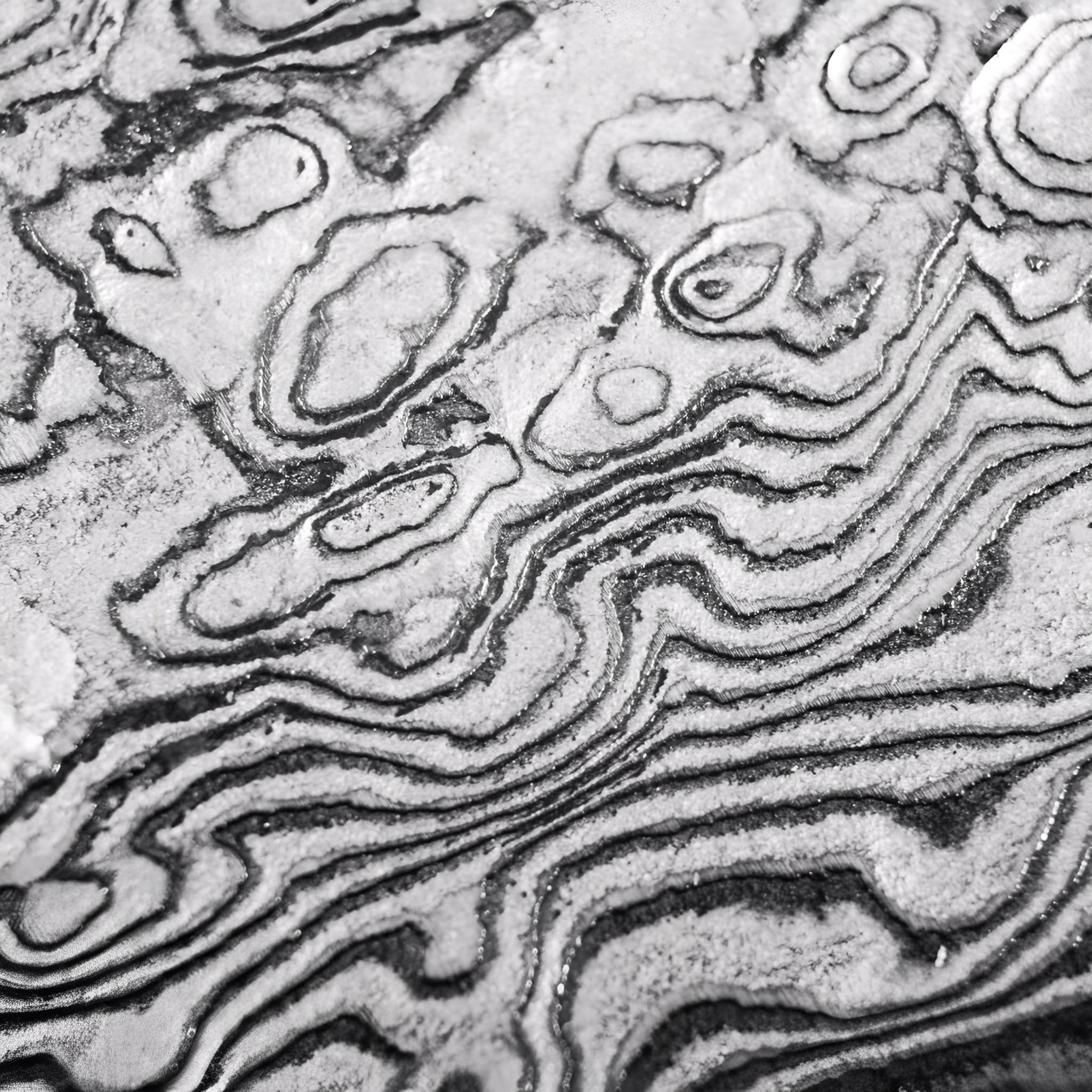
Materials Chosen Without Compromise
We select only the highest-grade steels and authentic fittings to ensure every katana is both a masterpiece and a reliable companion.
From the flawless hamon line to the perfectly balanced tang, each detail is carefully inspected to meet the highest standards of performance and aesthetics.
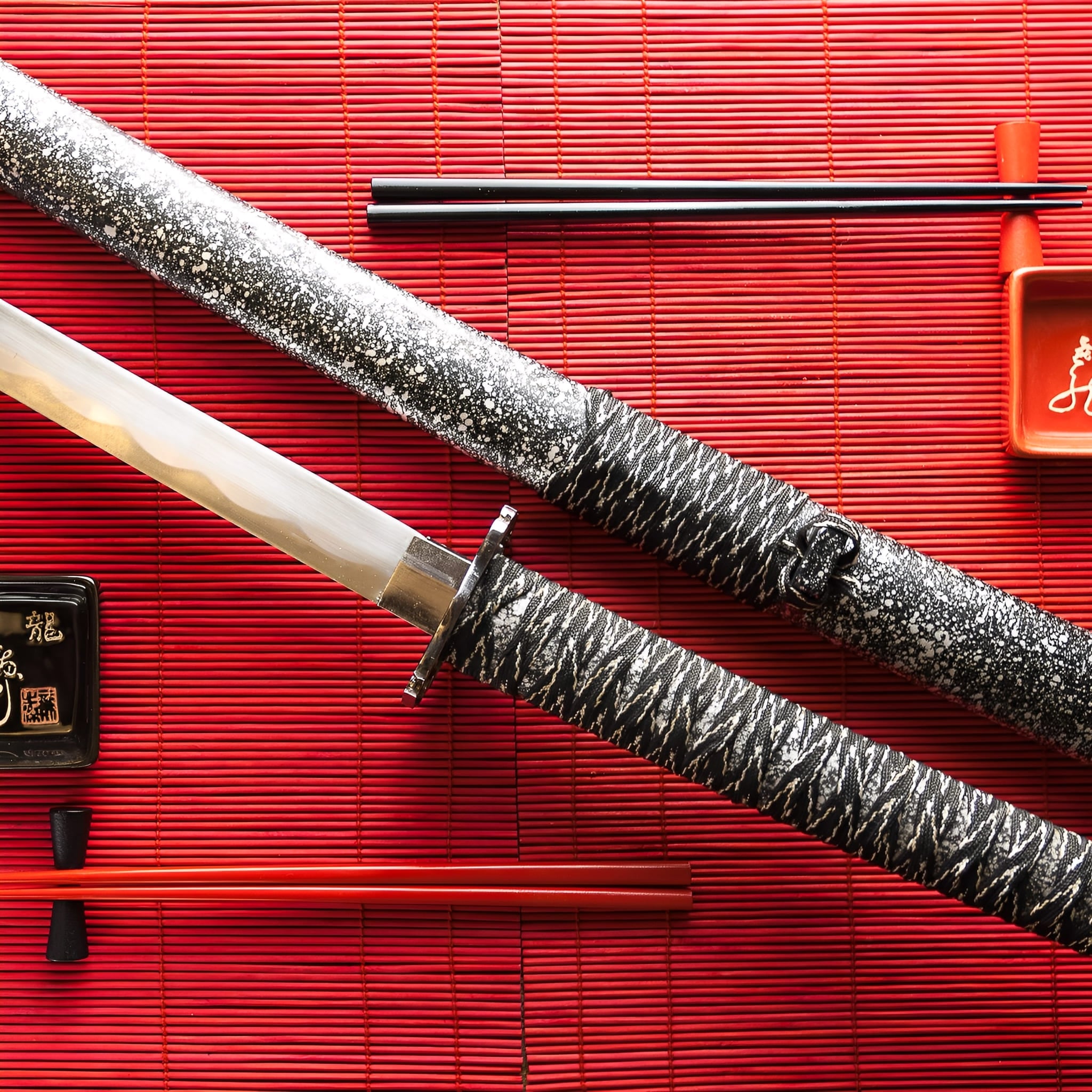
More Than a Sword, A Lifelong Legacy
Owning a handmade katana is an experience that goes beyond the blade itself. It’s holding history, tradition, and craftsmanship in your hands.
Whether displayed as a work of art or wielded with precision, your katana will stand as a symbol of timeless skill and dedication for generations to come.
-
Key Destinations
United States: 5–7 days
Canada: 5–7 days
Australia: 6–9 days
Denmark: 4–6 days
Netherlands: 3–5 days
Sweden: 4–6 days
Switzerland: 3–5 days
Finland: 5–7 days
Singapore: 6–8 days -
Central European Partners
France: 2–3 days
Germany: 3–5 days
Spain: 4–6 days
Italy: 4–6 days
Belgium: 3–5 days
Austria: 4–6 days
Ireland: 4–6 days
Poland: 4–6 days
Portugal: 4–6 days -
Extended EU Network
Czechia: 4–6 days
Hungary: 4–6 days
Slovakia: 4–6 days
Slovenia: 5–7 days
Romania: 5–7 days
Bulgaria: 5–7 days
Croatia: 5–7 days
Serbia: 5–7 days
Estonia: 5–7 days
Latvia: 5–7 days
Lithuania: 5–7 days
Luxembourg: 3–5 days
Greece: 5–8 days -
FAQ’s
Visit our FAQs page to find answers to common questions.